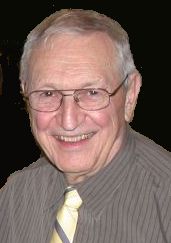- The Generalization of Mechanics and Electrodynamics (2010) [Updated 1 decade ago]
- An Analysis of the Theoretical Foundations of 20th Century Physics (2009) [Updated 1 decade ago]
- The Generalized Equations of Motion and the EPR (2009) [Updated 1 decade ago]
- The Postulates of Relativity (2009) [Updated 8 years ago]
- A Classical Replacement for Special Relativity (2008) [Updated 7 years ago]
- Hoek, Fizeau, and Einstein's Special Relativity (2008) [Updated 7 years ago]
- Relativistic Transformation Equations (2006) [Updated 1 decade ago]
- Superluminal Speeds and Superconductivity (2003) [Updated 8 years ago]
- The Generalization of Mechanics and Electrodynamics (2010) [Updated 1 decade ago]
An analysis of the basic principles, laws, formulas and pivotal experiments of physics leads to a new understanding which allows a surprisingly simple generalization of mechanics and electrodynamics. The formulas of special relativity are re-applied within this new context. While the speculative theories of the last century may have value in their ability to stimulate original thought and experiment, they must necessarily be modified or abandoned when proven to have no basis in reality.
- An Analysis of the Theoretical Foundations of 20th Century Physics (2009) [Updated 1 decade ago]
A critical evaluation is made of the fundamental concepts that shape contemporary physics. The critique is based on the interdependence of philosophical principles and experimental evidence. Application of logical methods that incorporate this interdependence provide simple solutions to seemingly difficult problems, whereas it is shown that ignoring it leads to excessive complexity, ad hoc theories, contradictions and statements that have no basis in logic or experience.
- The Generalized Equations of Motion and the EPR (2009) [Updated 1 decade ago]
It would appear that any question of "locality" or "non-locality" is primarily dependent on the validity of theories associated with the speed of light. There is the limitation imposed by relativity theory and some indication of superluminal speed associated with quantum theory. Because of our incomplete understanding of the fundamental laws of physics (hidden variables), such discussions can continue endlessly with no possibility of resolution. We will see that the answer has been obvious for the last hundred years.
- The Postulates of Relativity (2009) [Updated 8 years ago]
First Postulate: The laws of physics are the same in all inertial frames of reference. In analyzing this statement, we see that it contains the concept of a set of laws that have universal application, and that these laws apply to each and every frame of reference. We may therefore identify two possibilities with respect to it:
- That we have a universal super-ordinate or sub-ordinate continuum whose attributes influence every particle of matter.
- That every distinct and separate particle is equally constituted (has the same basic characteristics).
Both interpretations are valid, but mutually exclusive. In order to qualify as physics, each must exhibit physical characteristics. Otherwise, we are dealing with metaphysics. The inability to distinguish this difference is the principle cause of the chaotic state in which physics finds itself.
- A Classical Replacement for Special Relativity (2008) [Updated 7 years ago]
The following analysis of the theory of special relativity proves conclusively that all formulas and physical effects devolve to those of classical mechanics and electrodynamics. Specifically, they identify relativistic effects as due to the Doppler modifications of wavelengths, frequencies and energies naturally occurring because of the finite velocity of light in the observer's frame of reference.
- Hoek, Fizeau, and Einstein's Special Relativity (2008) [Updated 7 years ago]
One of the principal concerns of early experimenters in electromagnetism was the detection of a carrier for light waves (the aether). Theories in the mid 1800's ranged from that of Stokes, where it was assumed the aether was completely carried along by matter, to Fresnel and partial convection, to Maxwell and the universal aether, where light did not participate in the motion of matter in the slightest. The main problem in resolving the issue lay in an inability to obtain accuracy greater than first order in terrestrial experiments, because of the exceedingly small ratio between the velocities attainable for material objects and that of light (v/c).
- Relativistic Transformation Equations (2006) [Updated 1 decade ago]
The Lorentz transformation equations were developed to retain an absolute frame of reference (the aether) while incorporating the null results of the Michelson-Morley experiment. The Einstein interpretation dispensed with the aether. However, the two theories are equivalent since according to the Lorentz interpretation, there is no method one can use to identify an absolute frame of reference if it indeed exists.
Both theories employed the dilation of time and the contraction of space. This was principally a mathematical exercise that disregarded the physical and logical consequences involved in maintaining a constant velocity for light.
- Superluminal Speeds and Superconductivity
(2003) [Updated 8 years ago]
Both superluminal velocities and superconductivity are shown to devolve naturally from the generalized equations of motion identified in an earlier paper1. The behavior of "mass" as it approaches and exceeds light speed under uniform acceleration is illustrated and the statistical anomaly of barrier potential tunnelling is resolved. A significant difference between the angular and linear velocities involved in orbital motion is identified. Introduction: Sufficient experimental evidence exists for superluminal velocities although such is not accepted by the scientific community. This is primarily due to the assumed limitations on light speed imposed by special relativity and classical electrodynamics as well as the lack of a sound theoretical basis for exceeding it. Conversely, superconductivity is a well-established and recognized phenomenon but it also suffers from the absence of a comprehensive theory. In the following, it is shown they are both readily explained by one theory and identified as the extreme positions of kinetic and potential energies.



